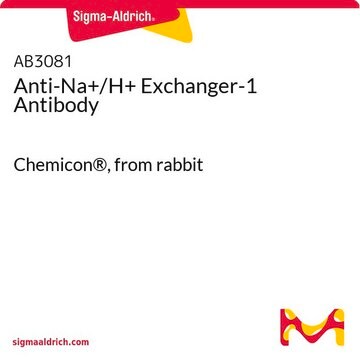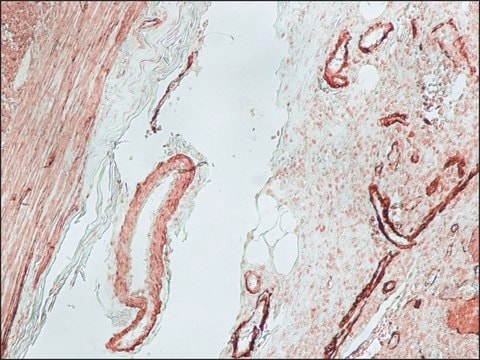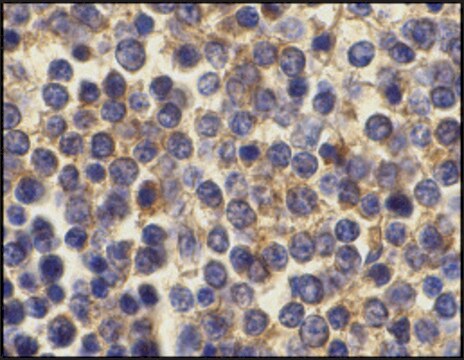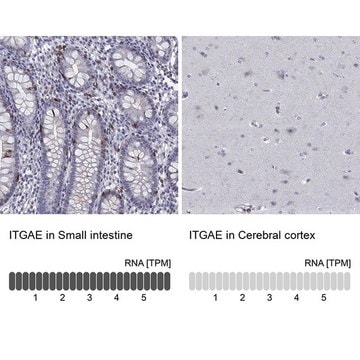MAB3140
Anti-Na+/H+ Exchanger-1 Antibody, CT, clone 4E9
clone 4E9, Chemicon®, from mouse
Sinónimos:
NHE1
About This Item
Productos recomendados
biological source
mouse
Quality Level
antibody form
purified immunoglobulin
antibody product type
primary antibodies
clone
4E9, monoclonal
species reactivity
amphibian, fish, avian, vertebrates (including including fish, amphibians, birds and mammals)
species reactivity (predicted by homology)
mouse, mammals, rat
manufacturer/tradename
Chemicon®
technique(s)
western blot: suitable
isotype
IgG1
suitability
not suitable for immunoprecipitation
NCBI accession no.
UniProt accession no.
shipped in
wet ice
target post-translational modification
unmodified
Gene Information
human ... SLC9A1(6548)
General description
Specificity
Immunogen
Application
Neuroscience
Ion Channels & Transporters
Not recommended for immunoprecipitation.
Immunoblotting:
1:1,000 dilution used on a previous lot.
Optimal working dilutions must be determined by the user.
Quality
Western Blot:
1:500 dilution of this lot detected Na+/H+ Exchanger-1 on 10 μg of Human Kidney lysates.
Target description
Physical form
Storage and Stability
Analysis Note
Kidney tissue (basolateral membrane)
Other Notes
Legal Information
Disclaimer
Not finding the right product?
Try our Herramienta de selección de productos.
Storage Class
12 - Non Combustible Liquids
wgk_germany
WGK 1
flash_point_f
Not applicable
flash_point_c
Not applicable
Certificados de análisis (COA)
Busque Certificados de análisis (COA) introduciendo el número de lote del producto. Los números de lote se encuentran en la etiqueta del producto después de las palabras «Lot» o «Batch»
¿Ya tiene este producto?
Encuentre la documentación para los productos que ha comprado recientemente en la Biblioteca de documentos.
Nuestro equipo de científicos tiene experiencia en todas las áreas de investigación: Ciencias de la vida, Ciencia de los materiales, Síntesis química, Cromatografía, Analítica y muchas otras.
Póngase en contacto con el Servicio técnico







